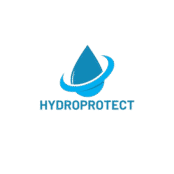Discover the Power of Hotmelt Roof Waterproofing
When it comes to ensuring your building’s roof remains leak-free and durable, hotmelt roof waterproofing emerges as a revolutionary solution. This method has been gaining traction among hall and warehouse owners, developers, and property managers for its long-lasting performance and efficiency. In this blog post, we explore the secrets of hotmelt technology, its advantages, and how it stands out compared to traditional waterproofing methods.
Understanding Hotmelt Roof Waterproofing
Hotmelt roof waterproofing is a fully bonded, monolithic system that utilizes a hot melt bituminous compound. This compound is applied to the roofing surface, creating a seamless membrane that provides exceptional waterproofing capabilities. The process is straightforward, yet the results are unparalleled.
The Hotmelt Application Process
The hotmelt system is applied as a hot liquid, which then cools and solidifies to form a tough, durable barrier. This method allows for easy installation and ensures complete adherence to the substrate. Let’s take a closer look at the steps involved:
- Preparation: The roofing surface is thoroughly cleaned and primed to ensure optimal adhesion of the hotmelt compound.
- Application: The hotmelt is heated and applied directly to the roof deck. As it cools, it forms a seamless layer.
- Finishing: To enhance durability, a reinforcement layer and additional protective layers are added. This could include materials like insulation and ballast.
Key Benefits of Hotmelt Technology
- Longevity: Hotmelt systems can last over 40 years with minimal maintenance, significantly reducing lifecycle costs.
- Seamless Finish: The monolithic nature of the hotmelt application eradicates weak points commonly associated with seams in other systems.
- Durability: The robust membrane offers high resistance to thermal movement and structural shifts.
- Versatility: Suitable for various substrates including concrete, wood, and metal, catering to diverse architectural needs.
Hotmelt vs. Traditional Waterproofing Methods
Understanding the benefits of hotmelt roof waterproofing involves comparing it against traditional methods. Here’s why more property managers are making the switch:
Comparison with Bitumen Felt Systems
Bitumen felt systems, although widely used, tend to have joined seams that can lead to potential water ingress. Moreover, their average lifespan is markedly less than that of a hotmelt system.
- Installation Complexity: Bitumen felt requires multiple layers, increasing installation time and complexity.
- Maintenance Needs: Regular checks are needed to maintain its efficacy and waterproofing ability.
Advantages Over Single-Ply Membranes
Single-ply membranes, often chosen for their ease of installation and cost-effectiveness, are not without drawbacks. They are susceptible to damage from UV rays and physical impacts, shortening their lifespan.
- Environmental Resistance: Hotmelt systems are inherently UV-stable and impact-resistant.
- Performance Under Stress: The flexibility of hotmelt adapts to surface movements without compromising the membrane.
The Economic Benefits of Hotmelt Roofing
While the upfront cost of hotmelt roofing might be higher than some traditional methods, the long-term savings make it a wise investment.
Cost-Effectiveness
Hotmelt’s resilience reduces the frequency and expense of repairs and replacements. Additionally, the extended warranty options often provided with hotmelt installations further enhance its cost-effectiveness.
Energy Efficiency
With added layers of insulation, hotmelt systems contribute to reduced energy consumption by maintaining a stable indoor temperature, making them an energy-efficient choice.
Summary
Hotmelt roof waterproofing offers an unparalleled blend of durability, versatility, and long-term cost savings, making it a standout choice for hall and warehouse owners, developers, and property managers. Its seamless membrane and exceptional environmental resistance give it a distinct advantage over conventional systems such as bitumen felt and single-ply membranes. As more industry professionals recognize these benefits, hotmelt technology continues to grow in popularity and is increasingly considered the future of roof waterproofing solutions.

